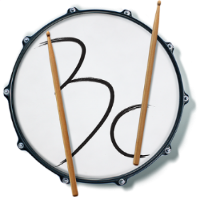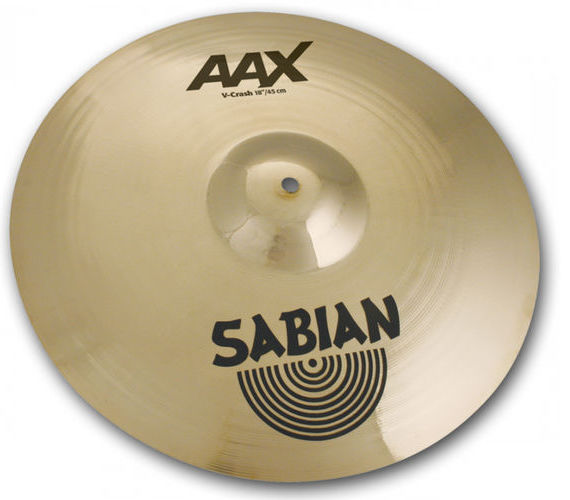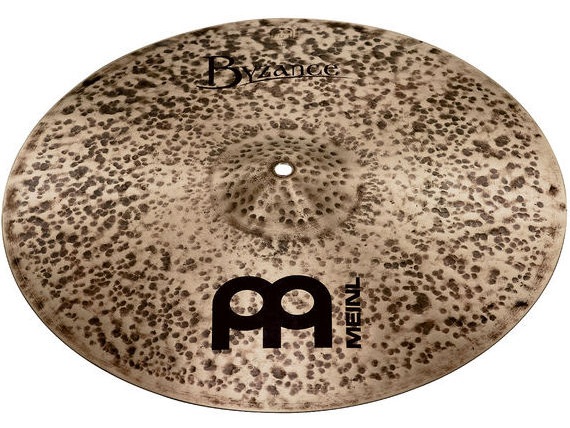Colors of Crashes: Tonal Varieties of Different Crash Cymbals
So you have a decent set of drums, you’ve been learning to play drums for a couple of years, and you start developing more particular tastes and preferences in sound. As a result, you decide the starter cymbal pack you initially purchased doesn’t cut it anymore. It’s time for an upgrade. Maybe upgrading all your cymbals at once is a bit cost-prohibitive, but you can justify treating yourself to a new crash cymbal. However, in your search for some new gear, you become overwhelmed by the enormous variety of sizes, finishes, thicknesses, and tonal properties of crash cymbals. Let’s have a closer look at some of the different traits of crash cymbals in order to make a more informed decision.
Size Matters: How Big Is a Crash Cymbal?
If you're wondering which size crash cymbal you should get, it's helpful to know that the diameter of a cymbal will largely determine its pitch and sustain. The size of most crash cymbals ranges from 16” - 20” in diameter, but some manufacturers produce crashes as small as 14” and as large as 22”. Crash cymbals smaller in size possess a fast attack and decay since the sound doesn’t have as much material to travel through compared to larger cymbals. The sound dissipates almost as quickly as it appears. However, smaller cymbals cannot project sound as effectively as larger cymbals and may get a bit buried in the mix in high-volume scenarios.
Larger sized crash cymbals typically produce a lower pitch and can get much louder than their smaller counterparts. In addition to more volume, larger cymbals also have a longer sustain, but a slower response. It takes a split second longer for the sound to reach its peak, but the sound lasts a greater duration. Repeatedly striking a large crash cymbal may cause it to “wash out,” where the sustain and tone of the cymbal drown out subsequent articulations. This effect works really well with loud, heavy music, but would overpower everything in a smaller venue or a quieter music setting.
Bright vs. Dark Crash Cymbals
Once you have an idea of what size crash would best suit your drumming needs, it’s time to explore different finishes. Cymbal finishes range from bright and brilliant, like a brand-new penny, to dark and complex, like an ancient artifact pulled from an archeological dig site.
Crash cymbals with a brilliant finish produce a relatively high pitch and a clean, glassy tone with clear articulation and a fast response. For example, Zildjian’s A Custom line of cymbals are known for their polished look and bright, explosive sound. Cymbal makers achieve the nearly mirrored finish by placing the cymbal on a lathe, which removes outer layers of the cymbal and exposes the shiny copper alloy underneath. Bright cymbals are also very loud and effectively cut through other noise. They are commonly preferred by rock and metal drummers that frequently find themselves in high-volume settings. Some other examples of bright cymbals are Meinl’s Mb20 series, Sabian’s AA and AAX series, and Paiste’s 2002 series.
What does a dark cymbal mean for your sound? On the opposite side of the spectrum, darker cymbals typically produce dryer, more complex sounds with a slightly slower response. Extremely dark cymbals have gained a lot of popularity lately, with certain manufacturers, such as Meinl, dedicating an entire line of cymbals to exploring darker tones. Some dark cymbals spend very little, if any time at all on a lathe. As a result, they often have a more raw, unfinished appearance and a short sustain. Cymbals with a darker finish produce fewer overtones and blend in with sound more than cut through it. Darker cymbals are more commonly used by jazz and experimental drummers, but they work well in practically all styles of music. Some other examples of darker cymbals are Zildjian’s K Custom Dark series, Istanbul’s Traditional Dark series, and Bosphorus’s Turk series.
Watching your Weight: How Does a Cymbal's Weight Affect Sound?
A less-than-obvious yet hugely important factor in a cymbal’s tone is its weight. While most drummers won’t ever worry about the specific weight of a cymbal, understanding the effect a cymbal’s weight has on its sound will help inform buying decisions. In general, heavier crash cymbals produce a higher pitch, greater volume, and a longer sustain than thinner, lighter cymbals.
For higher-end cymbals (especially ride cymbals), instrument retailers will commonly list the weight of the cymbal. Many high-end cymbals are manually crafted and hand-hammered, meaning that no two cymbals will sound exactly the same or have the same exact weight. Even two “identical” cymbals from the same series will differ slightly in tone and weight due to being hand crafted. For example, a 20” Istanbul Om Crash weighing in at 1690 grams will have a slightly lower pitch compared to another product from the same line weighing in at 1725 grams.
Deviating from the Norm: Effects Crash Cymbals
If more traditional styles of crash cymbals don’t really tickle your fancy, you may be in the market for an effects crash. Pretty much every cymbal manufacturer produces cymbals aimed at creating more distorted sounds. Effects cymbals typically exhibit unusual dimensions, elaborate hammering patterns, and even holes cut out of the cymbal.
Zildjian’s EFX crashes (pictured left) and Sabian’s Ozone crashes have large circles and ovals cut out of the body of the cymbal using a laser. Unlike traditional crash cymbals, the holes in these effects cymbals disrupt and change the direction of sound waves traveling through the instrument, creating a complex, “trashy” tone. While not ideal for every musical situation, effects crashes can add a nice dimension and color to your drumming.
Some cymbal makers have explored blending the best qualities of opposite ends of the tonal spectrum. Hybrid cymbals, like the Sabian Omni Crash and the Meinl Dual Crash (pictured right), feature distinct zones. The outer edge has a bright, brilliant finish while an inner ring and the bell have a dark, raw finish. These cymbals attempt to merge the projection of brighter cymbals and the complex tones of darker cymbals into a single instrument.
In Conclusion. . .
With all of the different finishes, weights and sizes of crash cymbals, it’s easy to lose track of the most important quality of an instrument: do you like how it sounds? Every drummer has vastly different preferences. What sounds perfect to one drummer may sound terrible to another. The ideal way to ensure you find the type of cymbal you truly love is to go to a music shop and try different cymbals. It’s always best to try before you buy!
All of our instructors here at Boston Drum Lessons draw from years of experience studying, playing, and performing on the drums in every capacity imaginable. Interested in starting your drumming journey or taking your skills to the next level? Schedule a trial lesson to get closer to your goals!






